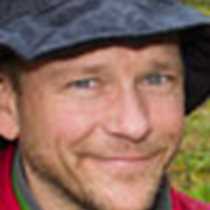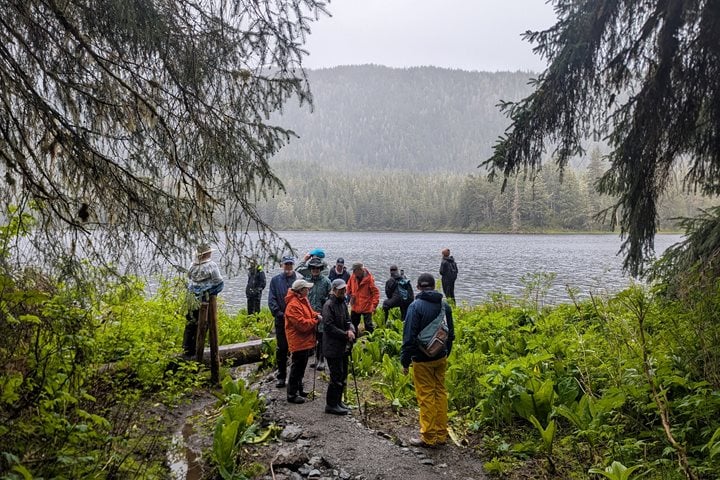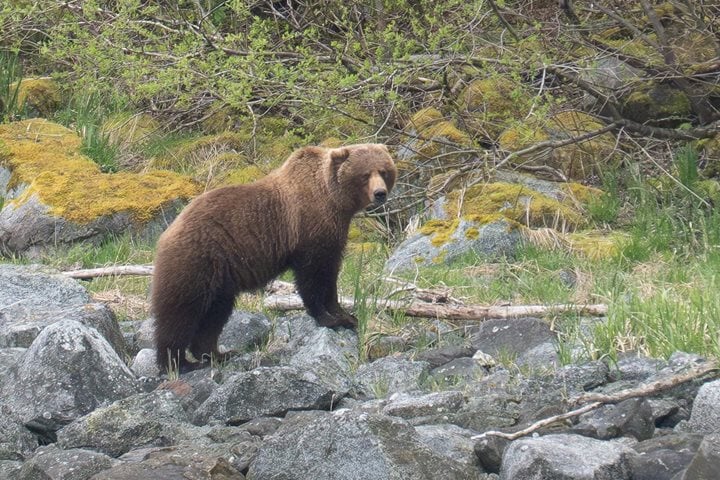In preparation for our day in Glacier Bay, we welcomed a park ranger from the National Park Service, a cultural interpreter, and guest speaker and raconteur, Kim Heacox. They navigated their way through our extremely wet and muddy mudroom with broad smiles in anticipation of the laughter and adventure that awaited us.
Kim regaled us with stories of adventure and discovery and read from one of his many engaging books. Before he left he played a couple of songs on his guitar, on the last of which he was joined by crew member Andrew Piepenburg who belted out “Wagon Wheel” with all of the guests joining in on the chorus.
Fortunately for us, the weather must have been listening because it wheeled around from perpetual pouring rain to elegant morning alpenglow and finally settled into a mosaic patchwork quilt of white clouds resting upon a soft bed of blue skies.
The alpenglow fell upon twin 10,000’ peaks which rest as sentinels to the Johns Hopkins Glacier, whose countless icebergs provided a resting platform for harbor seals. The dramatic fjord was filled with the remnants of yesterday’s monsoons, whose waters trundled down the mountainsides with the enthusiasm of a child on Christmas morning.
The interplay of cloud, mountain, light, and ice reminded us of a quote from early Glacier Bay explorer and naturalist, John Muir:
“…sunshine streamed through the luminous fringes of the clouds and fell on the green waters of the fjord, the glittering bergs, the crystal bluffs of the vast glacier, the intensely white, far-spreading fields of ice, and the ineffably chaste and spiritual heights of the Fairweather Range, which were now hidden, now partly revealed, the whole making a picture of icy wildness unspeakably pure and sublime.”
We transited from Johns Hopkins Inlet to the source of Glacier Bay itself—the Grand Pacific Glacier and its former tributary, Margerie Glacier. On our way to investigate the terminus of Margerie’s tidewater face, we were pleasantly interrupted by a coastal Alaskan brown bear. As the bear walked along the edge of the stream it was remarkable to realize that this very waterway was completely buried by a glacier just a short century ago. Now it had potentially evolved to a point where it could support life as complex as salmon.
And that, indeed, is the story of Glacier Bay—dramatic ecological change in the wake of the greatest documented retreat of a glacier on the planet.
While the rest of the day was filled with the wild sights that one might expect in Glacier Bay—sea lions, puffins, and otters—none of us was prepared for what the evening hours would yield--a full moon which rose off our bow, the very color of salmon itself.







